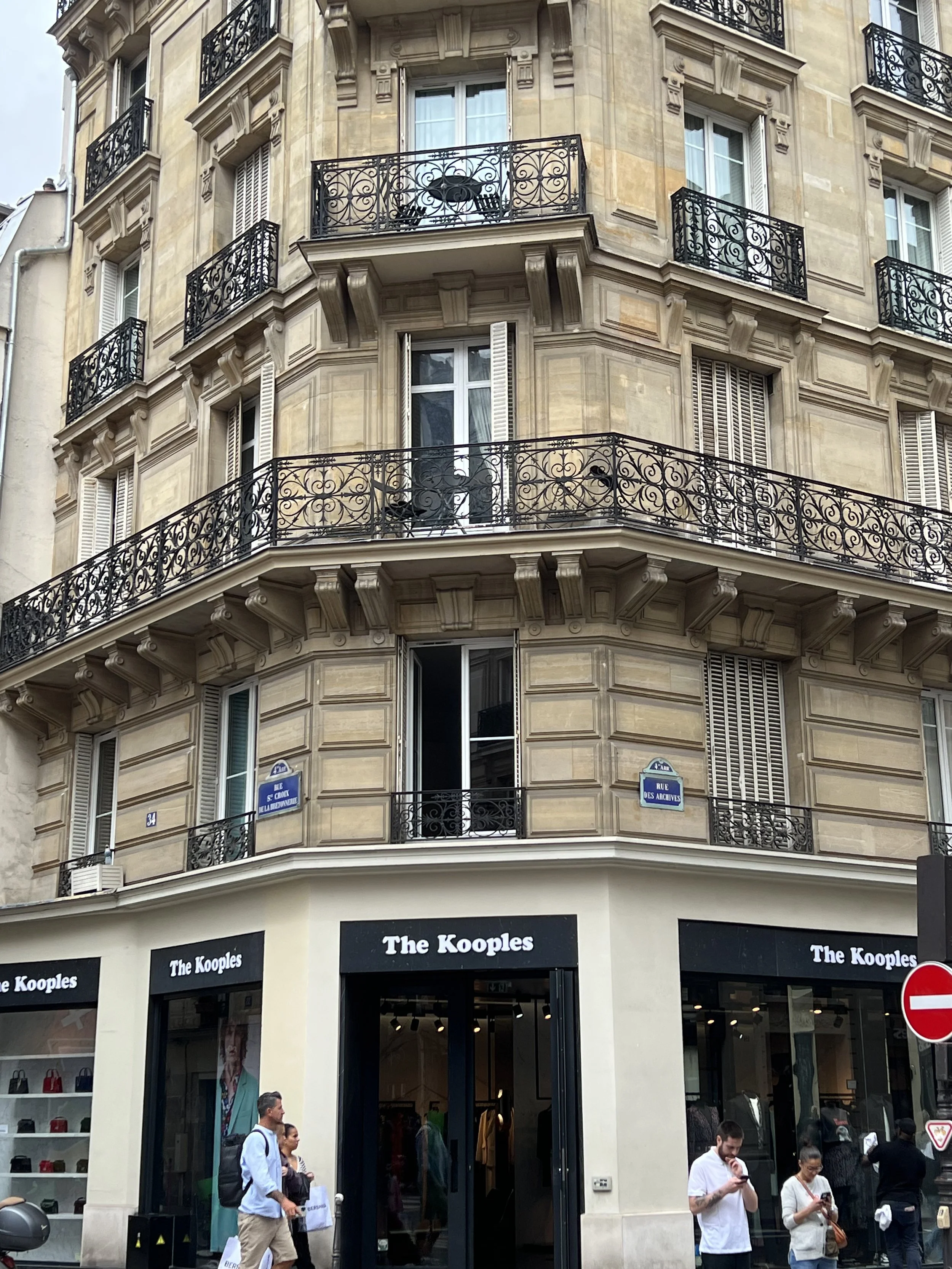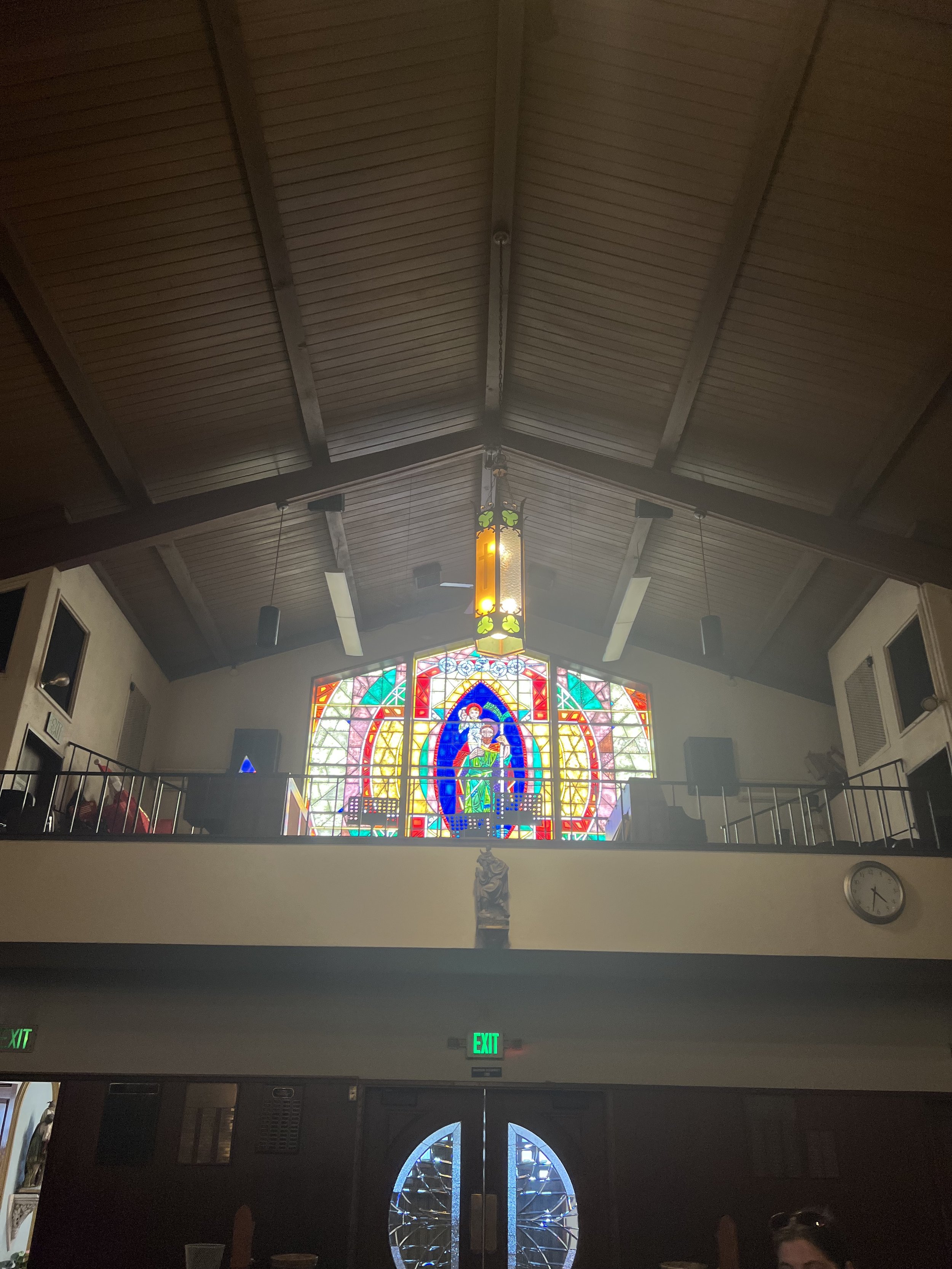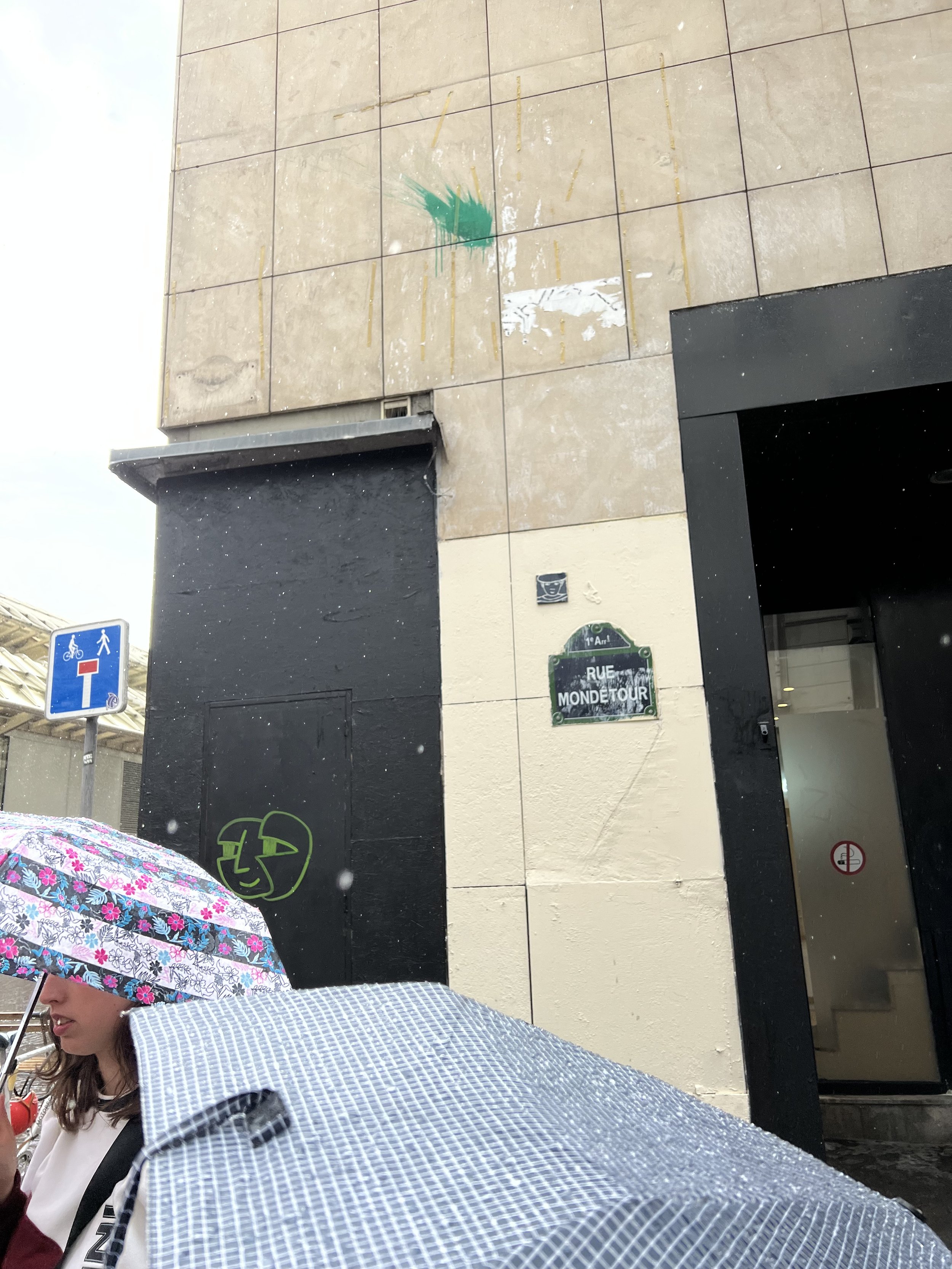Looking back on our time bookpacking, one of the most exciting locations we visited was the church of Saint Louis du Marais. At this church, notable sequences in both A Tale of Two Cities and Les Miserables unfold!
In A Tale of Two Cities, Monsieur the Marquis, a heartless French aristocrat, strikes and kills a poor boy with his carriage at this site. “With wild rattle and clatter, and an inhuman abandonment of consideration not easy to be understood in these days, the carriage dashed through the streets and swept round corners, with women screaming before it, and men clutching each other and clutching children out of the way. At last, swooping at a street corner by a fountain, one of the wheels came to a sickening little jolt, and there was a loud cry from a number of voices, and the horse reared and plunged” (Dickens 114). At this moment, a child is murdered by the rich man, who then shows no remorse; “ It is extraordinary to me,’ said he, ‘that you people cannot take care of yourselves and your children”, and then “He threw out a gold coin for the valet to pick up, and all the heads craned forward that all the eyes might look down at it as it fell” (115). Needless to say, this is a truly loathesome man. Flippantly paying a grieving father a gold coin for the loss of his son is utterly despicable. His complete lack of respect for the lower class is alarming and disgusting. Spoiler alert, Monsieur the Marquis is killed later for his actions- woohoo!
The Marquis by Harry Furniss
Alternatively, in Les Miserables, Cosette and Marius are wedded within the very same church. Readers of the foreword will note that this wedding date, February 17th 1833, is no coincidence: “Marius and Cosette’s wedding night- which was the date of Hugo’s first night with the actress Juliette Drouet, when ‘I awoke with love’, which began a liaison that lasted for fifty years” (Tombs XXV). Regardless of the scandalous origin of the date of this union, Hugo describes the day of the ceremony with “ It had been a wonderful day. It was not the fairy-tale wedding dreamed of by the grandfather, a fantastic spectacle with a riot of cherubim and cupids above their heads of the bridal pair, a marriage scene to grace a door panel, but it was charming and delightful” (Hugo 1219). He clarifies after that this is because weddings were rushed in those days and there is too much fuss. This is ironic because upon entering the church, I saw nothing but beauty and luxury- how could this not be a fairytale? You can feel the aura of warmth in the place even though it is made of cool stone, and imagining the moment at which Cosette and Marius become a married couple is such a lovely sight.
It is fascinating to me that in these two stories, such different displays of intense emotion are shown. For A Tale of Two Cities, some of the worst moments of humanity are shown in this part. The desperation and hopelessness of the crowd in tandem with the selfishness and lack of respect of the Marquis highlight some of the most horrible aspects of mankind. A polar opposite is drawn in Les Miserables. With this wedding, what a beautiful and light display of human compassion is observed!
Interestingly enough, in the books there exists one slight parallel: the loss of a child. While in Dickens’ story, a little boy is cruelly murdered, a different (and certainly less gruesome) kind of loss is felt by Valjean and Guillenormand, Marius’ grandfather who behaves as a father. For Valjean and Guillenormand, their children are given up for one another. They become, at the altar, a union separate from their parents. They no longer will rely on their nuclear family, as they are starting their own, and Cosette takes Marius’ last name. It is within Valjean that a deep sadness brews with the loss of his little girl, which is only intensified by his loneliness without a wife or family or friends; He feels the loss intensely whereas Guillenormand is more gleefully celebratory of this union. While the father in A Tale of Two Cities physically loses his son, these parental figures in Les Miserables lose their children in a different kind of way.
Now this area shows little trace of the stage on which these stories are set. The nearby fountain described by Hugo is nowhere to be found, but one can easily spot a cluster of metro stations and a spectacularly gaudy carousel in the square today. Although it takes a bit of brain power, if you stand on these stone streets, you can still picture the evil striking of the nameless boy and if you float into the church, you can imagine the pomp of the wedding. In the echoes of Saint Louis du Marais, you may even hear Cosette and Marius whispering their “I do’s”.




















